Echiostoma barbatum (threadfin dragonfish)
Watch this video for an overview on the threadfin dragonfish's light organs from Fish Curator James Maclaine.
The dragonfishes, family Stomiidae, are a large group of more than 270 species of predatory marine fish.
They are usually found at between 200 and 1,000 metres depth - in the mesopelagic zone.
Like many fish species living in this dimly-lit twilight zone, the threadfin dragonfish, Echiostoma barbatum, uses light organs or photophores much like a shallow water fish uses colour. It uses them to attract prey, as camouflage, and possibly even in courtship.
It has an illuminated barbel that it uses to attract prey, and that varies between younger and older fish.
The threadfin is quite big for a dragonfish - the largest recorded specimen was nearly 37cm long.
Species detail
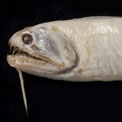
The holotype of Echiostoma barbatum. It lost its colour at some point between 1864 and 1930. © The Natural History Museum, London
We have 24 specimens of threadfin dragonfish in the fish collection here at the Natural History Museum, including the type specimens of Echiostoma barbatum and Echiostoma guentheri, which is now known to be synonymous with E. barbatum.
In life, the threadfin dragonfish is a dark brown colour, but its colour can fade dramatically after preservation - we have several specimens that are now completely white.
Behaviour
We know little about the threadfin dragonfish’s behaviour, but some things can be deduced from its appearance.
Its predatory mode of existence is clear from its numerous large pointed teeth, but whether it actively hunts its prey or lures it in with its light organs is unknown - it possibly does both.
-

Taxonomy
E. barbatum has distinctive fins - hence its common name, the threadfin dragonfish. But the variability in its barbel has caused problems with its classification. Discover some of E. barbatum’s other names.
-

Distribution
Find out where you might find the threadfin dragonfish and where it hunts its prey.
-

Biology
E.barbatum employs its light emitting organs to attract prey, to hide itself from predators and possibly for courtship. Find out more.
-

References
Get more reference information on Echiostoma barbatum.
Images
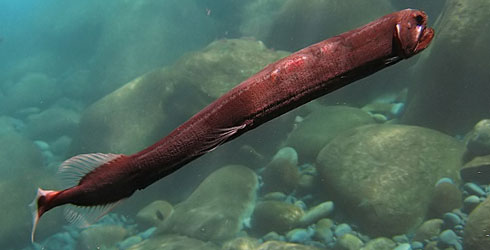
A live Echiostoma barbatum photographed in coastal waters near Funchal, Madeira.
© Helena Encarnação, www.ilhas-encantadas.blogspot.com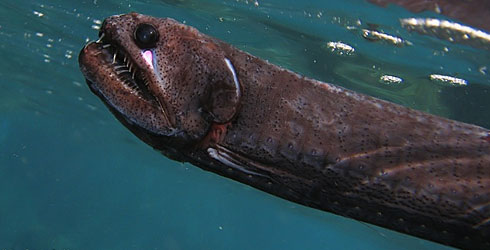
A live Echiostoma barbatum photographed in coastal waters near Funchal, Madeira.
© Helena Encarnação, www.ilhas-encantadas.blogspot.com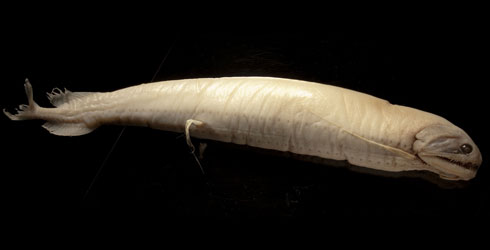
This is a very nice specimen of Echiostoma barbatum from our collections but unfortunately it has completely lost its colour. The rows of photophores that the fish uses for camouflage can clearly be seen along its underside.
© The Natural History Museum, London
An illustration of Echiostoma barbatum taken from Oceanic Ichthyology, Goode and Beane 1896.
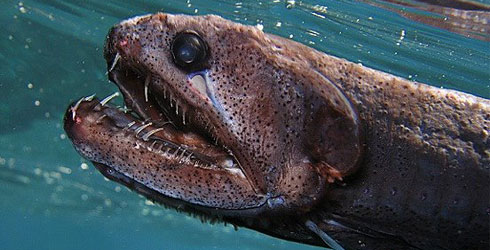
A live Echiostoma barbatum photographed in coastal waters near Funchal, Madeira.
© Helena Encarnação, www.ilhas-encantadas.blogspot.com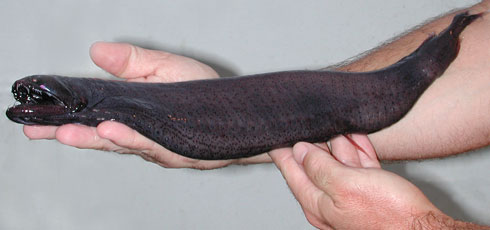
A freshly caught specimen of Echiostoma barbatum showing the dark brown colouration. The photophore behind the eye appears pink due to light reflecting off blood vessels in the organ (a bit like redeye in people), when emitting light the organ is a blue-green colour.
© Chris Kennaley, University of Washington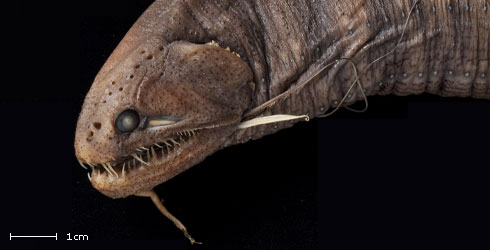
A close-up of the head of a female specimen of Echiostoma barbatum.
© The Natural History Museum, London
This is the holotype of Echiostoma barbatum, as described by Lowe in 1843. It lost its colour at some point between 1864 when it was described as “black” in a catalogue and 1930 when it was mentioned in a publication as “a bleached specimen”.
© The Natural History Museum, London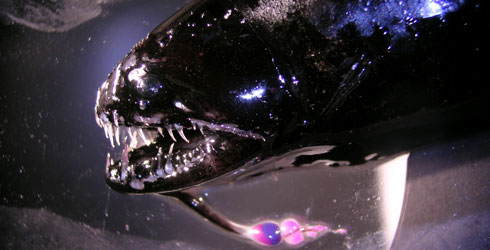
Younger specimens of Echiostoma barbatum have much more elaborate barbels then older ones. This is a juvenile. The lure at the end of the barbel appear pink because of the blood vessels within it, normally it emits a blue-green light in order to attract prey.
© Chris Kennaley, University of Washington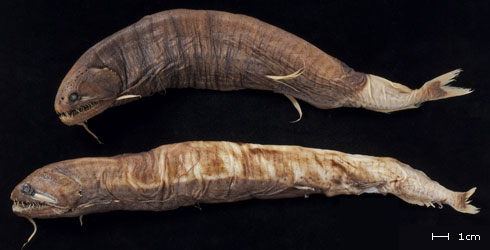
Male and female specimens of Echiostoma barbatum. The upper specimen is female. The long threadlike pectoral finrays can be seen stuck to the side of the body behind the head.
© The Natural History Museum, London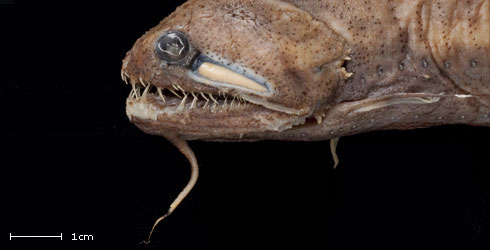
A close-up of the head of a male specimen of Echiostoma barbatum. Note the much larger post-orbital photophore, this is the long pale organ behind the eye. It is about three times longer than the same organ in the female. The barbel can also be seen protruding from the chin of the fish.
© The Natural History Museum, London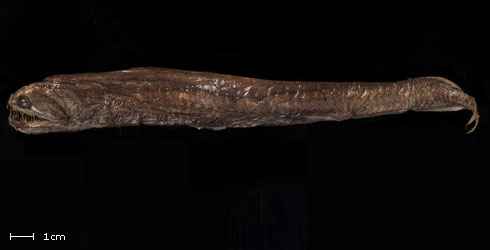
This is the specimen used by Regan and Trewavas in their description of Echiostoma guentheri, now known to be a synonym of Echiostoma barbatum. As it is the only specimen to be used in the description, it is called a holotype.
© The Natural History Museum, LondonAbout the author
Toolbox
Glossary
Holotype
If only one type specimen is mentioned in the original description, it is called a holotype.
Photophores
Light emitting organs that appear as luminous spots.
Type specimen
Type specimens are used to provide the first description of a species and serve as the definitive example of that species for comparative purposes.
